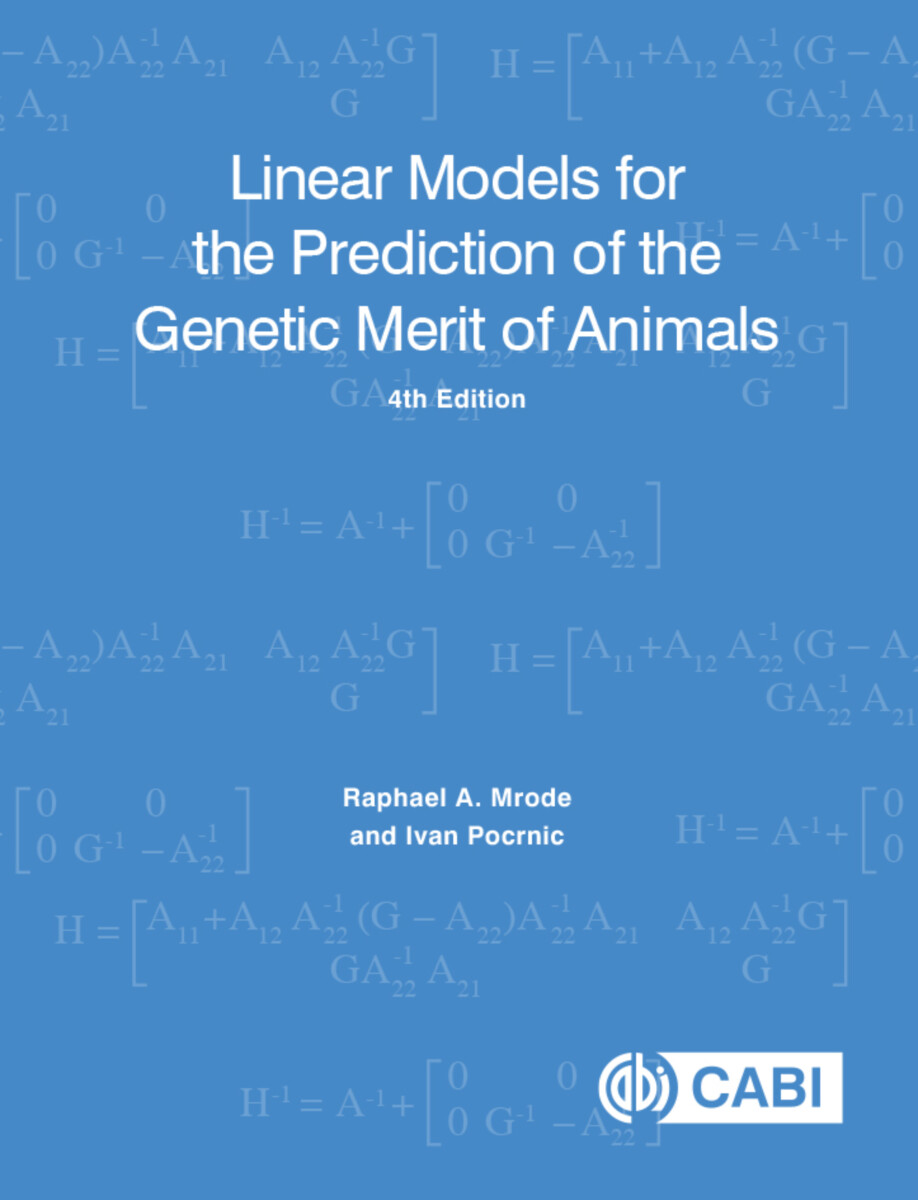Linear Models for the Prediction of the Genetic Merit of Animals Edition 4
- Publisher
CABI - Published
19th October 2023 - ISBN 9781800620483
- Language English
- Pages 412 pp.
- Size 7" x 9"
- Request Exam Copy
Fundamental to any livestock improvement program by animal scientists is the prediction of genetic merit in the offspring generation for desirable production traits such as increased growth rate, superior meat, milk, and wool production.
Covering the foundational principles on the application of linear models for the prediction of genetic merit in livestock, this new edition is fully updated to incorporate recent advances in genomic prediction approaches, genomic models for multi-breed and crossbred performance, dominance, and epistasis. It provides models for the analysis of main production traits as well as functional traits and includes numerous worked examples. For the first time, R codes for key examples in the textbook are provided online.
The book covers:
- The relationship between the genome and the phenotype.
- BLUP models for various livestock data and structure.
- Incorporation of related ancestral parents and metafounders in prediction models.
- Models for survival analysis and social interaction.
- Advancements in genomic prediction approaches and selection.
- Genomic models for multi-breed and crossbred performance.
- Models for non-additive genetic effects including dominance and epistasis.
- Estimation of genetic parameters including Gibbs sampling approaches.
- Computation methods for solving linear mixed model equations.
1. Genome and phenotypes
2. Genetic evaluation with different sources of records
3. Genetic covariance between relatives
4. Best linear unbiased prediction of breeding value: univariate models with one random effect
5. Best linear unbiased prediction of breeding value: Models with random environmental effects
6. Best Linear unbiased prediction of breeding value: Multivariate models
7. Methods to reduce the dimension of multivariate models
8. Maternal traits models: Animal and reduced animal Models
9. Social interaction models
10. Analysis of longitudinal data
11. Genomic prediction and selection
12. Single-step approaches to genomics
13. Non-additive animal models
14. Genetic and genomic models for multibreed and crossbred analyses
15. Analysis of ordered categorical traits
16. Survival analysis
17. Estimation of genetic parameters
18. Use of Gibbs sampling in variance component estimation and breeding value prediction
19. Solving linear equations
Raphael A. Mrode
Raphael Mrode is Professor of Quantitative Genetics and Genomics at Scotland's Rural College. He has been lecturing at Edinburgh University's Masters course on quantitative genetics and genome analysis since 2005, and has given lectures on mixed linear models and the use of various BLUP models for genetic prediction. His research interests include data modelling and analysis, the incorporation of molecular information in genetic evaluation procedures, the application of innovative approaches for data capture, analysis and feedback and investigating methods for generating alternative and novel phenotypes in small dairy systems in developing countries.
Ivan Pocrnic
Ivan Pocrnic is an animal geneticist with a specific interest in the development of novel breeding methodologies and tools. This work involves a synergy between theoretical, quantitative genetics and practical animal breeding. His primary expertise is applying genomic selection on big datasets for various agricultural species and various models, with emphasis on single-step genomic prediction.


